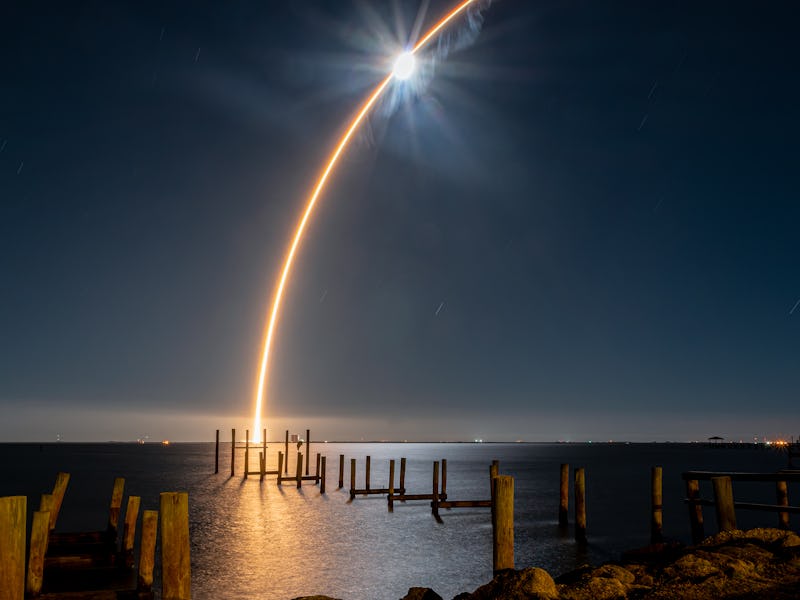SpaceX just lost up to 80 percent of its recently-launched Starlink satellites — here's why
The satellites are expected to burn up before they reach Earth’s orbit.

SpaceX’s Starlink constellation, an initiative that plans to provide satellite internet access across the planet, may take longer to build out than the company planned. On Tuesday, the space-faring firm acknowledged that up to 40 of the 49 satellites in its most recent launch won’t make their final destination. Instead of reaching low-Earth orbit, they’ll re-enter the atmosphere and burn up.
According to SpaceX, the satellites got mixed up in a geomagnetic storm that caused the atmosphere to warm and increase its density. The resulting atmospheric drag, which was 50 percent higher than previous launches, pulled the satellites back to Earth.
It’s a disappointing setback in SpaceX's plans for Starlink. The company is building out a mega-constellation in low-Earth orbit, using up to 42,000 satellites to offer high-speed and low latency internet access. The service advertises speeds of up to 500 megabits per second, and latencies as low as 20 milliseconds.
Astronomer Jonathan McDowell, who tracks the constellation on his website, has found there are 1,915 Starlink satellites currently in orbit. In total, SpaceX has launched 2,091 satellites.
Footage captured from Puerto Rico’s Sociedad de Astronomia del Caribe shows space debris entering the atmosphere. Marco Langbreok, a consultant at Leiden University’s astronomy department, wrote on Twitter that he “can now say with some more certainty” that this is one of the Starlink satellites.
Want to find out more about SpaceX’s plans for Starlink? Subscribe to MUSK READS+ for exclusive interviews and analysis about spaceflight, electric cars, and more.
SpaceX Starlink: What happened to the satellites?
The satellites launched into space via a Falcon 9 rocket on Thursday, February 3, at 1:13 p.m. Eastern time from Launch Complex 39A at the Kennedy Space Center in Florida.
Following the launch, the booster successfully landed on the drone ship, A Shortfall of Gravitas.
Unfortunately, the satellites didn’t fare quite so well against the geomagnetic storm. The National Oceanic and Atmosphere Administration explains that these disturbances happen when solar winds transfer energy into the space around Earth.
Due to the increase in atmospheric drag from the geomagnetic storms, SpaceX switched the satellites into a safe mode, allowing them to fly edge-on into the storm to avoid its worst effects.
The company worked with Space Force’s 18th Control Squadron and LeoLabs to keep track of the satellites, but it was unable to save most of the satellites. The satellites will now burn up in the atmosphere, meaning no debris will crash down to Earth.
SpaceX’s Starlink satellite dish on display.
SpaceX is expected to launch its next batch of Starlink satellites no earlier than February 20 from Space Launch Complex 40, located at the Cape Canaveral Space Force Station in Florida.
The company has big plans for its service and the revenue from it. Earlier this month, it announced a premium tier of the service aimed at businesses and other clients that demand more reliable service.
Reliability won’t come cheap, however. Where the existing service costs $99 per month, the Premium tier costs $500 per month.
SUBSCRIBE TO MUSK READS+, A PREMIUM NEWSLETTER THAT COVERS THE WORLDS OF ELON MUSK, SPACEX, TESLA, AND EVERYTHING BETWEEN